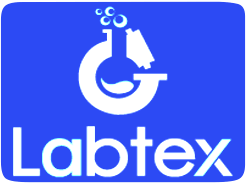- Water Testing Meters
- Anemometer
- Length & Distance Meter
- Multimeter & Clamp Meter
- Light and Sound Meter
- Slide Calipers & Screw Gauge
- Thermometer & Hygrometer
- Milk Testing Meters
- Paper, Grain & Wood Testers
- Stopwatch & Timers
- Soil Testing Meters
- Refractometers & Analyzer
- Magnetic Compass
- Tachometer & Megger
- Thickness & Dia-Meters
- Other Meter And Accessories
Example of Quantum Physics in Daily Life

When we talk about quantum physics, the subject is, often, too isolated to discuss. We can talk about Einstein or Schrödinger. What else? The above point may be the end of the conversation involving quantum physics. If someone asks us about everyday life or real-life examples of quantum physics, most of us are completely unaware of it. Once you learn about the real-life applications of quantum physics, you may wonder if the same examples were right in front of you! Let’s start this article and take a closer look at the many things that rely on quantum physics for their operation.

(1) Toaster | An Example of Quantum Physics
The bread toast you enjoy while sipping your morning tea is only able to land on your plate because of quantum physics. The heating element of the toaster glows red to toast a piece of bread. Toaster is commonly cited as the reason for the existence of quantum physics. The toaster rod gets hot, which in turn is responsible for toasting the bread.
(2) Fluorescent Lights
The light you get from a tube or incandescent bulb is just the result of a quantum phenomenon. In fluorescent light, small amounts of mercury vapor are excited into plasma. Mercury has the ability to throwdown light in the visible range. So, the next time you turn on the lights in your room at night, make sure you thank quantum physics.
(3). Computers and Mobile Phones
The entire computer world is based on the principles of quantum physics. Quantum physics speaks to the wave nature of electrons, and, therefore, it forms the basis of the band structure of solid matter upon which semiconductor-based electronics are built. Let’s not forget that we can exploit the electrical properties of silicon because we can study the wave nature of electrons. Once the band structure changes, the conductivity also changes. How can the band structure be changed? Of course, quantum physics knows the answer!
(4) Biological Compass
If you think that only mankind is lucky enough to use quantum physics, you are completely wrong! According to the scientists’ theory, birds like the European robin use quantum physics to migrate. A light-sensitive protein called cryptochrome contains electrons. Photons, after entering the bird’s eye, hit the cryptochrome, and radicals are released. This radical enables the bird to “see” a magnetic map.
Another theory suggests that birds’ beaks contain magnetic minerals. Crustaceans, lizards, insects, and even some mammals use this type of magnetic compass. You might be surprised to know that the same type of cryptochrome that flies use for navigation has also been found in human eyes! However, its use is unclear.
(5) Transistor is an Example of Quantum Physics
Transistors have widespread uses and are used to amplify or switch electrical signals and electrical power. Looking closely at the structure of transistors, we would realize that a transistor consists of layers of silicon associated with other elements.
Computer chips are made by millions of these, and these computer chips form the powerhouse of all the technological gadgets which have become central to human existence. Had Quantum Physics not come into play, these chips would not have been created and neither would desktops, tablets, laptops, smartphones, and other gadgets have found their way into human life.
(6) Laser Light | An Example of Quantum Physics
The principle on which lasers work is based on quantum physics. Laser work involves spontaneous emission, thermal emission, and fluorescence. An electron, when excited, will jump to a higher-energy level. However, it will not remain at the high-energy level for long and will return to a lower energy state that is more stable; And, as a result, light is emitted. The quantum mechanical state of the atom is also affected by external photons that are at frequencies associated with atomic changes.

